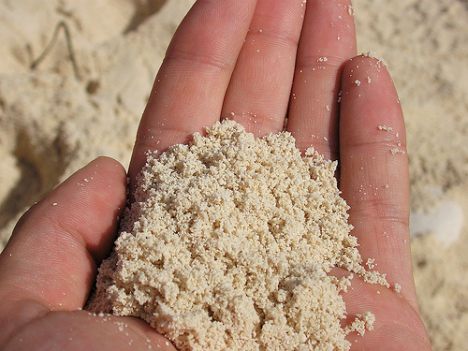Billions of people lack access to clean drinking water and researchers are constantly searching for cost-effective ways to purify water for rural villages and developing areas. A team of researchers has come up with just such a possible solution using “super sand,” or sand coated in an oxide of graphite.
Using sand to purify water is already an old strategy, but researchers from Rice University in Texas think that by coating it with graphite, the “super sand” will purify water more quickly and effectively than ever before. The BBC reports that coarse sand doesn’t purify as well as fine sand, but fine sand purifies very slowly as water percolates through. The new process could harness the best qualities of both.The research team dispersed graphite oxide into water and mixed it with regular sand. The mix is heated up to 105 degrees Celsius for a couple hours to rid the mix of excess water, and Voila! Super sand.
Rice University reports that the researchers ran two model contaminants for testing, including mercury at 400 parts per billion and Rhodmine B dye at 10 parts per million. When they ran the contaminated water through the specially coated sand, they found that the coated sand removed mercury for over 50 minutes before it was saturated, resulting in water with less than 1 part per billion — half the EPA’s maximum level for mercury in drinking water. They found similar results for the Rhodamine B dye.
[cvg-video videoId=’8′ width=’525′ height=’400′ /]
The solution is cheap since the sources of graphite could include the waste produced by graphite mining companies that still contains a significant amount of graphite. And the researchers believe that it is possible to modify the graphite oxide to pick out particular pollutants and therefore tailor the super sand to specific areas that might be having trouble with certain water-borne diseases or pollutants.
Other low-cost purification technologies being tried out is using cattails to remove arsenic from water, or even coating cloth in carbon nanotubes to improve an already popular way of purifying water by running it through sari cloth before drinking.
Source: http://www.treehugger.com/
Dear User/Visitor! Please, answer on our questions: tick off one of the positions – your answer will make us able to improve our site and make it more interesting and useful!


